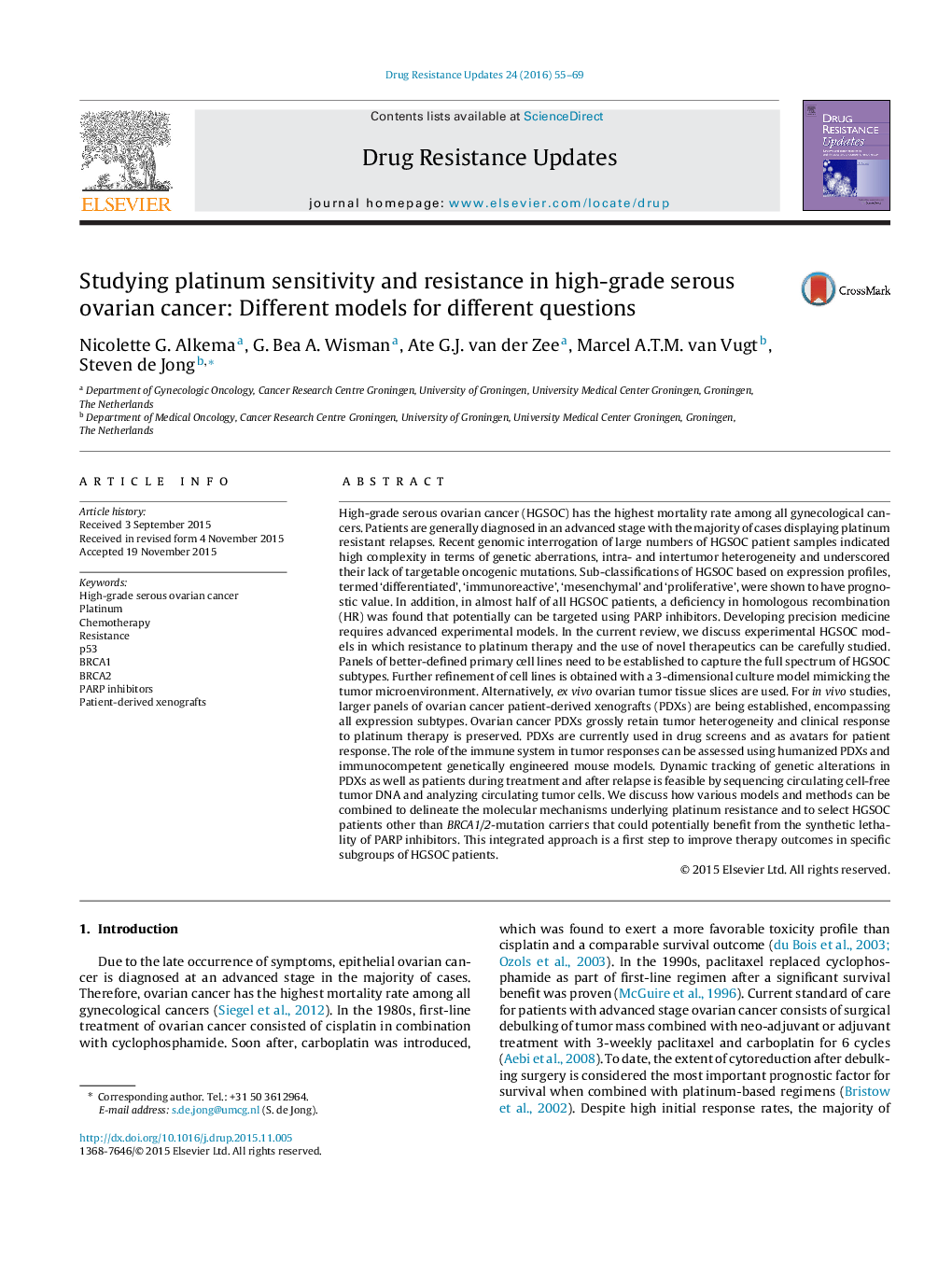| کد مقاله | کد نشریه | سال انتشار | مقاله انگلیسی | نسخه تمام متن |
|---|---|---|---|---|
| 2120308 | 1546839 | 2016 | 15 صفحه PDF | دانلود رایگان |
High-grade serous ovarian cancer (HGSOC) has the highest mortality rate among all gynecological cancers. Patients are generally diagnosed in an advanced stage with the majority of cases displaying platinum resistant relapses. Recent genomic interrogation of large numbers of HGSOC patient samples indicated high complexity in terms of genetic aberrations, intra- and intertumor heterogeneity and underscored their lack of targetable oncogenic mutations. Sub-classifications of HGSOC based on expression profiles, termed ‘differentiated’, ‘immunoreactive’, ‘mesenchymal’ and ‘proliferative’, were shown to have prognostic value. In addition, in almost half of all HGSOC patients, a deficiency in homologous recombination (HR) was found that potentially can be targeted using PARP inhibitors. Developing precision medicine requires advanced experimental models. In the current review, we discuss experimental HGSOC models in which resistance to platinum therapy and the use of novel therapeutics can be carefully studied. Panels of better-defined primary cell lines need to be established to capture the full spectrum of HGSOC subtypes. Further refinement of cell lines is obtained with a 3-dimensional culture model mimicking the tumor microenvironment. Alternatively, ex vivo ovarian tumor tissue slices are used. For in vivo studies, larger panels of ovarian cancer patient-derived xenografts (PDXs) are being established, encompassing all expression subtypes. Ovarian cancer PDXs grossly retain tumor heterogeneity and clinical response to platinum therapy is preserved. PDXs are currently used in drug screens and as avatars for patient response. The role of the immune system in tumor responses can be assessed using humanized PDXs and immunocompetent genetically engineered mouse models. Dynamic tracking of genetic alterations in PDXs as well as patients during treatment and after relapse is feasible by sequencing circulating cell-free tumor DNA and analyzing circulating tumor cells. We discuss how various models and methods can be combined to delineate the molecular mechanisms underlying platinum resistance and to select HGSOC patients other than BRCA1/2-mutation carriers that could potentially benefit from the synthetic lethality of PARP inhibitors. This integrated approach is a first step to improve therapy outcomes in specific subgroups of HGSOC patients.
Journal: Drug Resistance Updates - Volume 24, January 2016, Pages 55–69
